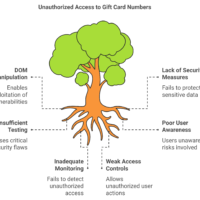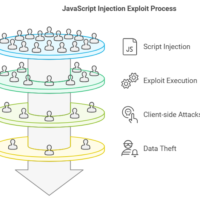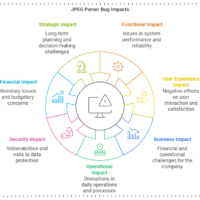Automation is often seen as a Hero 🦸 or a magic wand 🪄 in eyes of stakeholders—a tool that can save time, improve accuracy, and boost productivity. But as with all heroes, we sometimes give them too much power. When we place too much emphasis on automation, we risk missing out on the invaluable insights that come from exploratory testing. Let’s dive into the delicate balance between automation and manual testing and why the latter is just as critical in any test strategy.
Why Automation Isn’t Always a Silver Bullet 🔑
Don’t get me wrong—automation is a fantastic tool. It can run through regression tests faster than any human could, and it’s great for repetitive tasks. But here’s the catch: automation only does what we tell it to do. It runs predefined scripts and expects certain outcomes. That means it’s blind to anything outside the scope of those scripts.
For example:
- Automated tests won’t catch unexpected behavior unless you’ve predicted it and written a test case for it.
- They won’t explore the weird edge cases or quirky bugs that real users might stumble upon.
James Bach, a leading voice in the testing community, often emphasizes that “testing is an investigation, not just a verification process.” This means that while automation verifies what you already know, exploratory testing helps you discover the unknown.
The Mind Map of Testing: Finding the Balance ⚖️
Just go through the below mind map. Automation is just one branch of the larger tree of software testing. Exploratory testing, user testing, performance testing, and other branches contribute to the overall coverage. In fact, Michael Bolton has said, “Test coverage is not about how much of the code is executed; it’s about how much of the risk is examined.”
Below is a simplified mind map to illustrate how automated testing fits into the larger testing strategy:
Balance Discussion
Now that we’ve broken down each of these branches, it’s important to recognize that focusing too heavily on one branch (like automation) risks creating blind spots. Each branch—whether it’s exploratory testing or performance testing—offers insights that are crucial for thorough testing.
For example, exploratory testing can uncover unexpected user behaviors or edge cases that automated tests might miss, while security testing ensures that the application is safe from external threats. Here are the trade-offs:
Automation Pros:
- Efficiency: Handles repetitive tasks with speed.
- Consistency: Executes the same steps every time, avoiding human error.
Automation Cons:
- Rigidity: Can’t adapt to unexpected scenarios or changes in the application.
- Blind Spots: Misses out on testing new features or unpredicted behavior.
Exploratory Testing Pros:
- Creativity: Human testers bring insights and spontaneity.
- Broad Coverage: Can discover novel bugs and untested areas.
Exploratory Testing Cons:
- Time-Consuming: Requires manual effort and time.
- Inconsistent: The results can vary depending on the tester’s experience and mood.
So, we learn that…
The goal of this mind map is to help you visualize the importance of each testing method. When automation dominates the testing process, important bugs slip through the cracks. Balancing automation with exploratory testing ensures your product is tested from all angles—both the ones you expect and the ones you don’t.
By finding the right balance between the structured efficiency of automation and the insightful, unpredictable nature of exploratory testing, you can maximize your test coverage and minimize risk. Each of these branches contributes to the overall health of your testing process—so don’t rely too heavily on one over the others!
The Pitfalls of Over-Automation: Two Real-Life Bottleneck Examples 🚧
Now, let’s get into two real-world scenarios where over-reliance on automation can backfire.
1. The Phantom Bug 👻
Imagine you’ve automated all your regression tests for a web app. Everything passes—green lights across the board. You think, “Great! Time to ship it.” But then, a user reports a bug where, under certain conditions, the form submission breaks when using a specific browser.
Automated tests might have missed this because they only tested on a handful of common browsers. Exploratory testing, on the other hand, would have involved testers experimenting with different browsers and devices, catching this issue early.
Here’s a tip: Always set aside time for manual, exploratory testing after your automated tests run, especially for cross-browser compatibility.
2. The Forgotten Feature 🔍
Your automated tests are focused on core functionalities—sign-up flows, checkout processes, etc. But in a recent sprint, a small but crucial feature (like saving a user’s preferences) was added to the app. Since your automated tests weren’t updated to include this new feature, it slips through the cracks and isn’t tested at all.
Exploratory testing, by nature, encourages testers to explore the product in its entirety and may catch these forgotten features that automation overlooks.
The lesson here? Automation is only as good as the test cases you write. Exploratory testing ensures nothing gets left behind.
Different Perspectives on Automation 🧠
Here are some contrasting opinions on the role of automation in testing:
- Pro-Automation: Automation allows for faster feedback loops, continuous integration, and scalability. According to industry experts, it enables developers and testers to focus on high-level tasks, leaving the repetitive, mundane tasks to the machines.
- Pro-Exploratory Testing: On the flip side, exploratory testing provides a human element—a layer of creativity and intuition that no machine can replicate. Jonathan Bach once pointed out, “Exploratory testing is a simultaneous learning, test design, and test execution process.” Without this, you miss out on real-world scenarios.
The balance between these two views is key. Automation should complement, not replace, manual testing.
A Simple Example of Automation vs. Exploratory Testing 🎯
Here’s a quick comparison table to see where each method shines:
| Aspect | Automation Testing | Exploratory Testing |
|---|---|---|
| Speed | Fast for repetitive tasks | Slower, but insightful |
| Coverage | Limited by predefined scripts | Broad and spontaneous |
| Finding Unexpected Bugs | Only if scripted | Often finds hidden bugs |
| Human Creativity | Absent | Central to the process |
| Cost of Maintenance | High (needs constant updating) | Low (just needs testers’ time) |
Takeaway: Both approaches are important, but don’t fall into the trap of thinking that automation can do it all.
Automation Maintenance Costs: Hidden Time Sink 🕰️
While automation speeds up regression tests, there’s a hidden cost many teams overlook: maintenance. Test scripts break. They need updating with every UI change or feature adjustment. The time you save with automation can easily be eaten up by maintaining those scripts.
A tip for better automation strategy: Adopt design patterns like the Page Object Model (POM) or use Cucumber for behavior-driven testing (BDD). These reduce maintenance overhead and make tests more modular and easier to update.
Wrapping Up: Don’t Throw Away Your Exploratory Hat 🎩
In conclusion, while automation is a powerful tool, it should never replace the human touch that exploratory testing provides. They are complementary strategies that, when used together, provide robust coverage and catch more bugs. Remember the wise words of Cam Kaner, who said, “Testing is the process of comparing the invisible to the ambiguous, so that we can understand what is probably true.”
So, keep automating, but don’t forget to take off the blindfold and explore the software with fresh eyes.
Want to dive deeper into the topic? Check out related articles by Michael Bolton and James Bach.










¡Saludos, jugadores dedicados !
Casinos sin licencia espaГ±ola con software fiable – http://www.casinossinlicenciaenespana.es/ casinos sin licencia espaГ±ola
¡Que vivas momentos únicos !
¡Saludos, fanáticos del desafío !
Casino online extranjero con torneos exclusivos – https://www.casinosextranjerosenespana.es/# casinosextranjerosenespana.es
¡Que vivas increíbles instantes inolvidables !
Коллекция Nautilus, созданная мастером дизайна Жеральдом Гентой, сочетает спортивный дух и прекрасное ремесленничество. Модель Nautilus 5711 с автоматическим калибром 324 SC имеет 45-часовой запас хода и корпус из белого золота.
Восьмиугольный безель с округлыми гранями и циферблат с градиентом от синего к черному подчеркивают уникальность модели. Браслет с H-образными элементами обеспечивает комфорт даже при повседневном использовании.
Часы оснащены функцией даты в позиции 3 часа и сапфировым стеклом.
Для сложных модификаций доступны секундомер, вечный календарь и функция Travel Time.
Заказать часы Патек Филипп Nautilus на сайте
Например, модель 5712/1R-001 из розового золота с калибром повышенной сложности и запасом хода на двое суток.
Nautilus остается предметом коллекционирования, объединяя современные технологии и классические принципы.
¡Hola, exploradores de recompensas !
Casino sin licencia con proceso fГЎcil – https://casinossinlicenciaespana.es/# casinos sin licencia espaГ±a
¡Que experimentes logros excepcionales !
¡Hola, descubridores de recompensas !
casinoonlinefueradeespanol con seguridad avanzada – https://casinoonlinefueradeespanol.xyz/# casinos online fuera de espaГ±a
¡Que disfrutes de asombrosas botes impresionantes!
¡Saludos, seguidores del triunfo !
Recomendaciones para jugar en casinos online extranjeros – https://www.casinoextranjerosenespana.es/ casinos extranjeros
¡Que disfrutes de tiradas afortunadas !
¡Saludos, cazadores de fortuna !
casinos online extranjeros con tragaperras exclusivas – https://www.casinosextranjero.es/# casinos extranjeros
¡Que vivas increíbles jugadas excepcionales !
На данном сайте можно получить Telegram-бот “Глаз Бога”, который собрать сведения о гражданине через открытые базы.
Инструмент функционирует по фото, обрабатывая актуальные базы онлайн. Благодаря ему можно получить бесплатный поиск и глубокий сбор по фото.
Сервис обновлен согласно последним данным и включает аудио-материалы. Глаз Бога сможет найти профили в открытых базах и отобразит информацию за секунды.
глаз бога телеграмм регистрация
Это сервис — идеальное решение в анализе персон удаленно.
¡Bienvenidos, descubridores de riquezas !
Casino fuera de EspaГ±a acepta criptomonedas – п»їhttps://casinoporfuera.guru/ casinos online fuera de espaГ±a
¡Que disfrutes de maravillosas movidas brillantes !
Прямо здесь доступен Telegram-бот “Глаз Бога”, что проверить данные о человеке по публичным данным.
Сервис активно ищет по ФИО, используя актуальные базы в Рунете. Благодаря ему доступны 5 бесплатных проверок и глубокий сбор по запросу.
Инструмент актуален согласно последним данным и охватывает аудио-материалы. Глаз Бога поможет узнать данные в открытых базах и отобразит информацию в режиме реального времени.
глаз бога поиск по телеграм
Такой инструмент — идеальное решение для проверки граждан через Telegram.
¡Hola, buscadores de fortuna !
Casinos extranjeros con promociones diarias – https://www.casinoextranjero.es/# casinoextranjero.es
¡Que vivas jugadas asombrosas !
На данном сайте доступен мессенджер-бот “Глаз Бога”, позволяющий найти сведения о гражданине по публичным данным.
Бот активно ищет по фото, используя актуальные базы в Рунете. Благодаря ему доступны пять пробивов и детальный анализ по фото.
Сервис обновлен на 2025 год и охватывает мультимедийные данные. Бот сможет проверить личность в открытых базах и предоставит информацию за секунды.
глаз бога бот бесплатно
Данный бот — помощник в анализе персон удаленно.
Прямо здесь вы найдете Telegram-бот “Глаз Бога”, что найти сведения по человеку через открытые базы.
Сервис функционирует по ФИО, используя актуальные базы онлайн. Через бота можно получить 5 бесплатных проверок и детальный анализ по фото.
Инструмент актуален на август 2024 и включает фото и видео. Сервис гарантирует найти профили в соцсетях и покажет результаты в режиме реального времени.
телеграм бот глаз бога проверка
Такой инструмент — выбор для проверки людей онлайн.
¡Saludos, exploradores de recompensas !
casinos fuera de EspaГ±a sin verificaciГіn facial – https://casinosonlinefueraespanol.xyz/# casinosonlinefueraespanol.xyz
¡Que disfrutes de momentos irrepetibles !
¡Hola, amantes del ocio y la emoción !
Casinosextranjerosdeespana.es – guГa confiable – https://www.casinosextranjerosdeespana.es/# casinosextranjerosdeespana.es
¡Que vivas increíbles giros exitosos !
¡Bienvenidos, apostadores apasionados !
Casino fuera de EspaГ±a con nuevas slots semanales – https://www.casinofueraespanol.xyz/ п»їп»їcasino fuera de espaГ±a
¡Que vivas increíbles recompensas fascinantes !
Этот бот способен найти информацию по заданному профилю.
Укажите никнейм в соцсетях, чтобы сформировать отчёт.
Система анализирует открытые источники и цифровые следы.
бот глаз бога информация
Информация обновляется в реальном времени с проверкой достоверности .
Оптимален для проверки партнёров перед важными решениями.
Анонимность и точность данных — наш приоритет .
Хотите собрать информацию о человеке ? Этот бот поможет детальный отчет мгновенно.
Воспользуйтесь уникальные алгоритмы для поиска цифровых следов в открытых источниках.
Выясните контактные данные или активность через автоматизированный скан с верификацией результатов.
глаз бога официальный телеграм
Система функционирует в рамках закона , обрабатывая открытые данные .
Закажите детализированную выжимку с историей аккаунтов и графиками активности .
Попробуйте надежному помощнику для исследований — результаты вас удивят !
Нужно собрать информацию о человеке ? Этот бот предоставит полный профиль мгновенно.
Воспользуйтесь уникальные алгоритмы для анализа публичных записей в соцсетях .
Выясните контактные данные или интересы через систему мониторинга с гарантией точности .
тг канал глаз бога
Система функционирует с соблюдением GDPR, обрабатывая общедоступную информацию.
Закажите детализированную выжимку с историей аккаунтов и списком связей.
Доверьтесь проверенному решению для исследований — точность гарантирована!
¡Saludos, entusiastas del éxito !
Casino online extranjero con plataforma multilingГјe – п»їhttps://casinoextranjerosdeespana.es/ mejores casinos online extranjeros
¡Que experimentes maravillosas tiradas afortunadas !
Hello champions of vitality !
Air Purifier to Remove Smoke – Home Essentials – п»їhttps://bestairpurifierforcigarettesmoke.guru/ best air filter for cigarette smoke
May you experience remarkable pristine moments !
¡Hola, cazadores de tesoros ocultos !
Casinosinlicenciaespana: juega sin restricciones legales – п»їhttps://casinosinlicenciaespana.xyz/ casino sin licencia
¡Que vivas increíbles victorias memorables !
Этот бот поможет получить данные по заданному профилю.
Достаточно ввести никнейм в соцсетях, чтобы сформировать отчёт.
Бот сканирует публичные данные и цифровые следы.
глаз бога программа для поиска
Информация обновляется в реальном времени с фильтрацией мусора.
Идеально подходит для анализа профилей перед сотрудничеством .
Анонимность и актуальность информации — гарантированы.
¡Saludos, descubridores de tesoros !
Casinos no regulados con tragamonedas exclusivas – http://audio-factory.es/ casino online sin registro
¡Que disfrutes de asombrosas movidas excepcionales !
¡Bienvenidos, fanáticos del desafío !
Casino online sin registro y sin burocracia – http://mejores-casinosespana.es/ casinos sin licencia en EspaГ±ola
¡Que experimentes maravillosas movidas destacadas !
¡Saludos, apostadores expertos !
Casinos no regulados sin procedimientos extensos – п»їemausong.es emausong.es
¡Que disfrutes de increíbles recompensas únicas !
Хотите собрать информацию о пользователе? Наш сервис поможет детальный отчет мгновенно.
Используйте продвинутые инструменты для анализа цифровых следов в открытых источниках.
Выясните контактные данные или активность через систему мониторинга с гарантией точности .
глаз бога пробить номер
Система функционирует с соблюдением GDPR, обрабатывая открытые данные .
Получите детализированную выжимку с геолокационными метками и списком связей.
Доверьтесь надежному помощнику для исследований — результаты вас удивят !
Нужно найти данные о пользователе? Этот бот поможет детальный отчет мгновенно.
Используйте уникальные алгоритмы для поиска публичных записей в соцсетях .
Выясните место работы или активность через систему мониторинга с гарантией точности .
глаз бога бот ссылка
Бот работает в рамках закона , обрабатывая открытые данные .
Закажите расширенный отчет с историей аккаунтов и графиками активности .
Доверьтесь проверенному решению для исследований — результаты вас удивят !
¡Hola, buscadores de premios excepcionales!
Casinos sin registro con opciones avanzadas – http://www.casinosonlinesinlicencia.es/ casinos sin registro
¡Que vivas increíbles giros afortunados !
В этом ресурсе доступна сведения о любом человеке, в том числе подробные профили.
Базы данных содержат граждан всех возрастов, мест проживания.
Информация собирается на основе публичных данных, подтверждая достоверность.
Поиск осуществляется по имени, сделав использование эффективным.
глаз бога телеграмм канал
Дополнительно можно получить контакты плюс полезная информация.
Работа с информацией проводятся с соблюдением правовых норм, что исключает разглашения.
Используйте предложенной системе, чтобы найти нужные сведения в кратчайшие сроки.
На данном сайте предоставляется сведения о любом человеке, от кратких контактов до полные анкеты.
Базы данных включают граждан любой возрастной категории, мест проживания.
Сведения формируются на основе публичных данных, подтверждая достоверность.
Обнаружение производится по контактным данным, что обеспечивает работу эффективным.
официальный глаз бога
Помимо этого можно получить контакты плюс важные сведения.
Обработка данных проводятся в рамках правовых норм, обеспечивая защиту несанкционированного доступа.
Обратитесь к этому сайту, в целях получения искомые данные максимально быстро.
Нужно собрать информацию о пользователе? Этот бот предоставит детальный отчет мгновенно.
Используйте продвинутые инструменты для анализа публичных записей в соцсетях .
Выясните контактные данные или активность через автоматизированный скан с гарантией точности .
глаз бога телефон
Система функционирует с соблюдением GDPR, используя только открытые данные .
Закажите расширенный отчет с геолокационными метками и графиками активности .
Доверьтесь надежному помощнику для исследований — результаты вас удивят !
При выборе семейного врача стоит обратить внимание на его опыт , стиль общения и удобные часы приема.
Убедитесь, что клиника расположена рядом и предоставляет полный спектр услуг .
Узнайте , работает ли доктор с вашей полисом, и какова загруженность расписания.
https://biologytechs.com/forum/viewtopic.php?p=731#p731
Оценивайте рекомендации знакомых, чтобы понять уровень доверия .
Не забудьте наличие профильного образования, подтверждающие документы для уверенности в качестве лечения.
Выбирайте — тот, где примут во внимание ваши особенности здоровья, а общение с персоналом будет комфортным .
¡Saludos, descubridores de riquezas secretas !
Casinosonlineconbonodebienvenida sin depГіsito – http://bono.sindepositoespana.guru/ casino online bono de bienvenida
¡Que disfrutes de asombrosas movidas brillantes !
На данном сайте доступна сведения о любом человеке, включая исчерпывающие сведения.
Реестры содержат людей любой возрастной категории, мест проживания.
Данные агрегируются на основе публичных данных, обеспечивая надежность.
Нахождение выполняется по фамилии, что делает процесс удобным.
глаз бога телеграмм официальный сайт
Помимо этого доступны адреса а также важные сведения.
Обработка данных выполняются с соблюдением правовых норм, что исключает несанкционированного доступа.
Обратитесь к данному ресурсу, для поиска нужные сведения максимально быстро.
Нужно найти данные о человеке ? Этот бот поможет детальный отчет в режиме реального времени .
Используйте продвинутые инструменты для анализа публичных записей в открытых источниках.
Выясните место работы или активность через систему мониторинга с верификацией результатов.
глаз бога тг бесплатно
Система функционирует с соблюдением GDPR, обрабатывая общедоступную информацию.
Получите расширенный отчет с геолокационными метками и графиками активности .
Попробуйте проверенному решению для digital-расследований — результаты вас удивят !
Ответственная игра — это комплекс мер , направленный на предотвращение рисков, включая поддержку уязвимых групп.
Сервисы должны внедрять инструменты контроля, такие как временные блокировки, чтобы избежать чрезмерного участия.
Регулярная подготовка персонала помогает выявлять признаки зависимости , например, неожиданные изменения поведения .
вавада вход
Предоставляются ресурсы консультации экспертов, где обратиться за поддержкой при проявлениях зависимости.
Следование нормам включает аудит операций для предотвращения мошенничества .
Задача индустрии создать условия для ответственного досуга, где удовольствие сочетается с психологическим состоянием.
Greetings, explorers of unique punchlines !
Funny text jokes for adults anytime – п»їhttps://jokesforadults.guru/ adults jokes
May you enjoy incredible epic punchlines !
Нужно найти данные о пользователе? Этот бот предоставит полный профиль мгновенно.
Используйте продвинутые инструменты для поиска цифровых следов в открытых источниках.
Узнайте место работы или интересы через автоматизированный скан с гарантией точности .
глаз бога телефон
Бот работает в рамках закона , обрабатывая открытые данные .
Закажите детализированную выжимку с геолокационными метками и списком связей.
Доверьтесь проверенному решению для digital-расследований — результаты вас удивят !
Ответственная игра — это минимизирование рисков для участников, включая установление лимитов .
Рекомендуется планировать бюджет , чтобы сохранять контроль над затратами.
Воспользуйтесь функциями временной блокировки, чтобы приостановить активность в случае потери контроля.
Поддержка игроков включает горячие линии , где можно получить помощь при проявлениях зависимости .
Играйте с друзьями , чтобы избегать изоляции, ведь семейная атмосфера делают процесс более контролируемым .
1win
Изучайте правила платформы: лицензия оператора гарантирует защиту данных.
При выборе компании для квартирного переезда важно проверять её наличие страховки и репутацию на рынке.
Изучите отзывы клиентов или рекомендации знакомых , чтобы оценить надёжность исполнителя.
Сравните цены , учитывая расстояние перевозки , сезонность и услуги упаковки.
https://e34club.com.ua/topic/19873-%D0%BA%D0%B0%D0%BA-%D0%BF%D0%B5%D1%80%D0%B5%D0%B2%D0%B5%D0%B7%D1%82%D0%B8-%D0%BE%D0%BA%D0%BE%D0%BD%D0%BD%D1%8B%D0%B5-%D0%B1%D0%BB%D0%BE%D0%BA%D0%B8/
Убедитесь наличия гарантий сохранности имущества и запросите детали компенсации в случае повреждений.
Обратите внимание уровень сервиса: оперативность ответов, детализацию договора.
Проверьте, есть ли специализированные автомобили и упаковочные материалы для безопасной транспортировки.
Online platforms provide a modern way to meet people globally, combining intuitive tools like photo verification and compatibility criteria.
Key elements include video chat options, geolocation tracking , and personalized profiles to streamline connections.
Advanced algorithms analyze behavioral patterns to suggest compatible matches, while account verification ensure safety .
https://screea.com/dating/blending-fantasy-gender-and-intense-pleasure/
Many platforms offer freemium models with exclusive benefits , such as priority in search results, alongside real-time notifications .
Looking for casual chats , these sites cater to diverse needs , leveraging community-driven networks to foster meaningful bonds.
Выгребная яма — это водонепроницаемый резервуар, предназначенная для сбора и частичной переработки отходов.
Система работает так: жидкость из дома поступает в бак , где твердые частицы оседают , а жиры и масла всплывают наверх .
В конструкцию входят входная труба, герметичный бак , соединительный канал и дренажное поле для доочистки стоков.
https://iambuilding.ru/forum/user/6319/
Преимущества: низкие затраты , долговечность и экологичность при соблюдении норм.
Однако важно контролировать объём стоков, иначе неотделённые примеси попадут в грунт, вызывая загрязнение.
Типы конструкций: бетонные блоки, полиэтиленовые резервуары и стекловолоконные модули для индивидуальных нужд.
Уточните задачи вашей партнёрки в i-gaming, обозначив целевую аудиторию, чтобы гарантировать рост .
Проверьте репутацию потенциальных партнёров: их опыт работы и прозрачность отчётности — ключевые критерии .
Проверьте источники через анализ вовлечённости, чтобы исключить ботов .
https://inside.one/kloaking/
Убедитесь в совместимости с API-решениями, чтобы автоматизировать процессы .
Уточните локализацию партнёра: охват стран влияют на эффективность кампаний .
Строите партнёрство с проверенными агентствами , где высокая лояльность гарантируют масштабируемость.